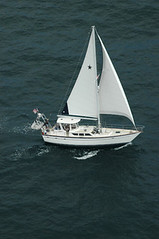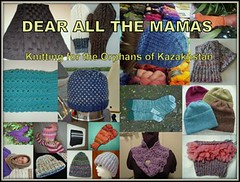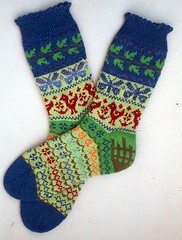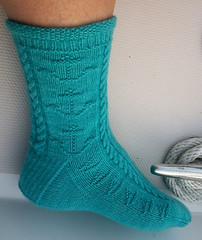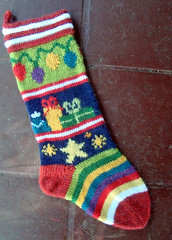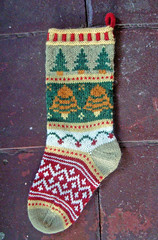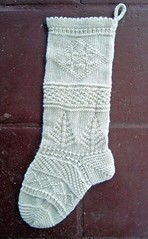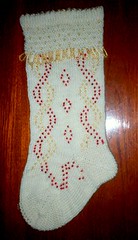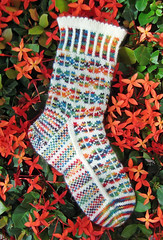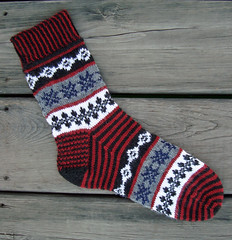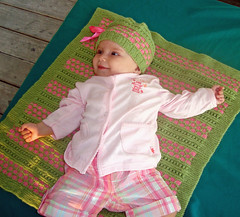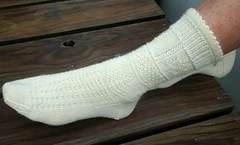
Wednesday, March 24, 2010
Achutupu
 Achutupu (pronounced Ah-choo-too-poo), and the tiny Uaguineaga (no, I don't know how to pronounce that!) were the next islands where we went ashore. Little did we realize what a treat we would find here - the Dolphin Lodge EcoResort.
Achutupu (pronounced Ah-choo-too-poo), and the tiny Uaguineaga (no, I don't know how to pronounce that!) were the next islands where we went ashore. Little did we realize what a treat we would find here - the Dolphin Lodge EcoResort. If you are looking to experience the Kuna Yala of Panama, we recommend that you check this place out. The Dolphin Lodge is a rustic and clean little resort on the tiny island of Uaguineaga. The woman in the photo here is the wife (one of the wives?) of the ow
If you are looking to experience the Kuna Yala of Panama, we recommend that you check this place out. The Dolphin Lodge is a rustic and clean little resort on the tiny island of Uaguineaga. The woman in the photo here is the wife (one of the wives?) of the ow ner who we met later. The lodge is a series of thatched roof guest houses all lining the shore which gives you access to some wonderful snorkeling.
ner who we met later. The lodge is a series of thatched roof guest houses all lining the shore which gives you access to some wonderful snorkeling.This is the view looking out from the back porch of your guest-hut. The resort will help you pick up a water taxi/tour guide and head out to many other islands for white beaches or go tour the jungle on the mainland. This would be my kind of vacation - (oh wait...it's our real life).

Here's Jonesy chatting it up with a friendly worker at the lodge in the "dining room" which is open to the sea to let in the breezes - rustic, quiet, and peaceful.
 Of course we made a couple of trips in to explore the town. It is quite attractive with lots of big trees planted among the houses (huts) of the people who live there. We came across this store which sold the cloth, thread, and other supplies for making molas as well as the printed, silky fabrics for the whole blouse (which is also called a mola). Everywhere we went, women were stitching on molas.
Of course we made a couple of trips in to explore the town. It is quite attractive with lots of big trees planted among the houses (huts) of the people who live there. We came across this store which sold the cloth, thread, and other supplies for making molas as well as the printed, silky fabrics for the whole blouse (which is also called a mola). Everywhere we went, women were stitching on molas.  These rectangles of fabric are a significant source of cash income to the women.
These rectangles of fabric are a significant source of cash income to the women.I purchased this mola blouse for $30 on Achutupu. The detailed reverse-applique mola panels are on both sides of the blouse - and it actually fits me!
 We also bought a t-shirt ($10) for Jonesy which has some appliqued Kuna designs on it. These are made strictly for tourists including the cruiser guys who wear these as their "dress up for dinner" shirts in the various marinas that we spend time in. It's important to have the lastest style in regionally-specialized cruiser attire!
We also bought a t-shirt ($10) for Jonesy which has some appliqued Kuna designs on it. These are made strictly for tourists including the cruiser guys who wear these as their "dress up for dinner" shirts in the various marinas that we spend time in. It's important to have the lastest style in regionally-specialized cruiser attire! One day on our wanderings through the pathways between the houses, we came upon a man sewing a mola as he sat in his hammock. He told us his name was "Smith". I heard later that the brother of the famous Master mola-maker Venancio lives on t
One day on our wanderings through the pathways between the houses, we came upon a man sewing a mola as he sat in his hammock. He told us his name was "Smith". I heard later that the brother of the famous Master mola-maker Venancio lives on t his island and yes, sometimes calls himself Smith which isn't his Kuna name. His stitchwork was beautiful and I did wonder at the time if he was a student of Venancios. Seems it is probably so.
his island and yes, sometimes calls himself Smith which isn't his Kuna name. His stitchwork was beautiful and I did wonder at the time if he was a student of Venancios. Seems it is probably so.Of course there were children everywhere! They love to have their
 pictures taken so that they can look at themselves on the digital screen of the camera. We always felt safe and welcome here.
pictures taken so that they can look at themselves on the digital screen of the camera. We always felt safe and welcome here.We had planned to stay here only a couple of days, but the weather wouldn't behave for us. Although we had some nice trade winds, a big thunderstorm came through dropping about 3 inches of rain in a short time! Although the storm dissapated, the sea was muddy from all of the run-off from the rivers on the mainland nearby. Because we couldn't see down into the water to know exactly where the reefs were, we c
 ouldn't risk traveling until the water cleared. No biggie. Rain is to be excepted - after all it is a "Rain" forest.
ouldn't risk traveling until the water cleared. No biggie. Rain is to be excepted - after all it is a "Rain" forest.So we simply hung out in the cockpit, knit, read, and watched the Kunas paddling or sailing their ulu canoes back and forth from the mainland where they went to tend their farm plots. Occasionally they would stop by the boat for a visit. From some women, we bought another mola, and we gave them a couple of pairs of reading glasses which they asked for. These are important tools for older women so that they can see their stitchwork on the molas (or knitting in my case, not that I'm older).
Another visitor to Niki Wiki was the owner of the Dolphin Lodge EcoResort and his lovely wife. We chatted a bit, and he gifted us with a couple of green coconuts (pipa dudu - sounds like potty talk and the kid in me loves to say it). He asked if we had any English language c
 hildren's books onboard for learning English. Nope, but we did have an extra Spanish/English dictionary!
hildren's books onboard for learning English. Nope, but we did have an extra Spanish/English dictionary!Good trade.
Speaking of trading, there are quite a few enterprising Colombians who motor up and down along the Kuna Yala chain of islands to pick up the Kuna's coconuts in exchange for all sorts of junk food and manufactured goods. Here's a photo of a typical "Colombian Trader" vessel.
 They usually are quite rough and often home-built looking. Judging by the prices of goods in the little stores the traders don't appear to be gouging the Kunas as the retail prices are very reasonable.
They usually are quite rough and often home-built looking. Judging by the prices of goods in the little stores the traders don't appear to be gouging the Kunas as the retail prices are very reasonable.Again, because we were anchored off of a village, we didn't swim in the waters here. Let's just share that the "toilet facilities" are these tiny one-person structures which are built over the water. No worries about flushing - the sea does it for you!
 At night, we would listen to music and just stare at the stars if it wasn't cloudy. I never would have imagined 40 years ago that I would be dancing to Led Zeppelin under the stars on a moonless night in Panama.
At night, we would listen to music and just stare at the stars if it wasn't cloudy. I never would have imagined 40 years ago that I would be dancing to Led Zeppelin under the stars on a moonless night in Panama.And here's another view of the mainland areas of the Kuna Yala comarca of Panama which is mostly wild rain forest.
Comments:
<< Home
Oh Terri, do I have a picture to show you of an outhouse. When you feel you have nothing better to do, slip over to my blog "anoldgermansknitblog.blogspot.com and look under September 25, 2007. By the way what kind of socks does the wife of the lodge owner wear or are my eyes deceiving me. Renate
Those are BEADS on her legs! All the Kuna women in traditional clothes have these strings of glass beads wrapped around their legs. They are very pretty, but I can't see that they would be comfortable!
Fabulous, just fabulous! I so enjoy reading about your adventures.
I've always wanted to visit the Kuna Indians. I do have one small mola, framed, which I just love!
BTW, I live in a town called Kuna, honest!
Continued safe sailing!
Post a Comment
I've always wanted to visit the Kuna Indians. I do have one small mola, framed, which I just love!
BTW, I live in a town called Kuna, honest!
Continued safe sailing!
<< Home

